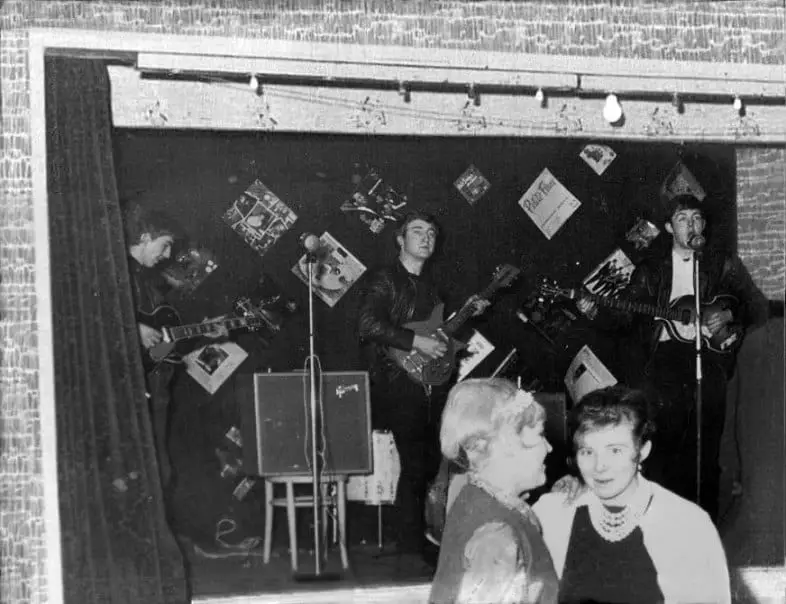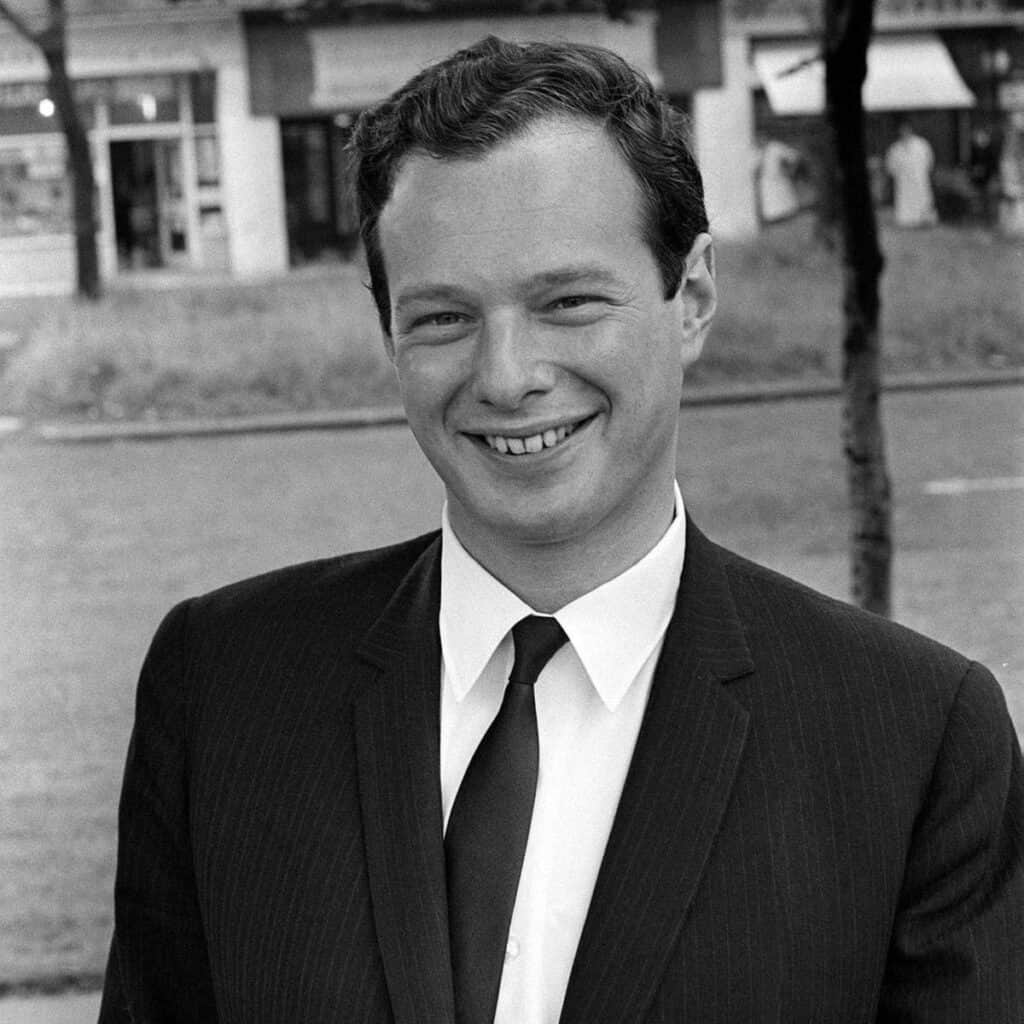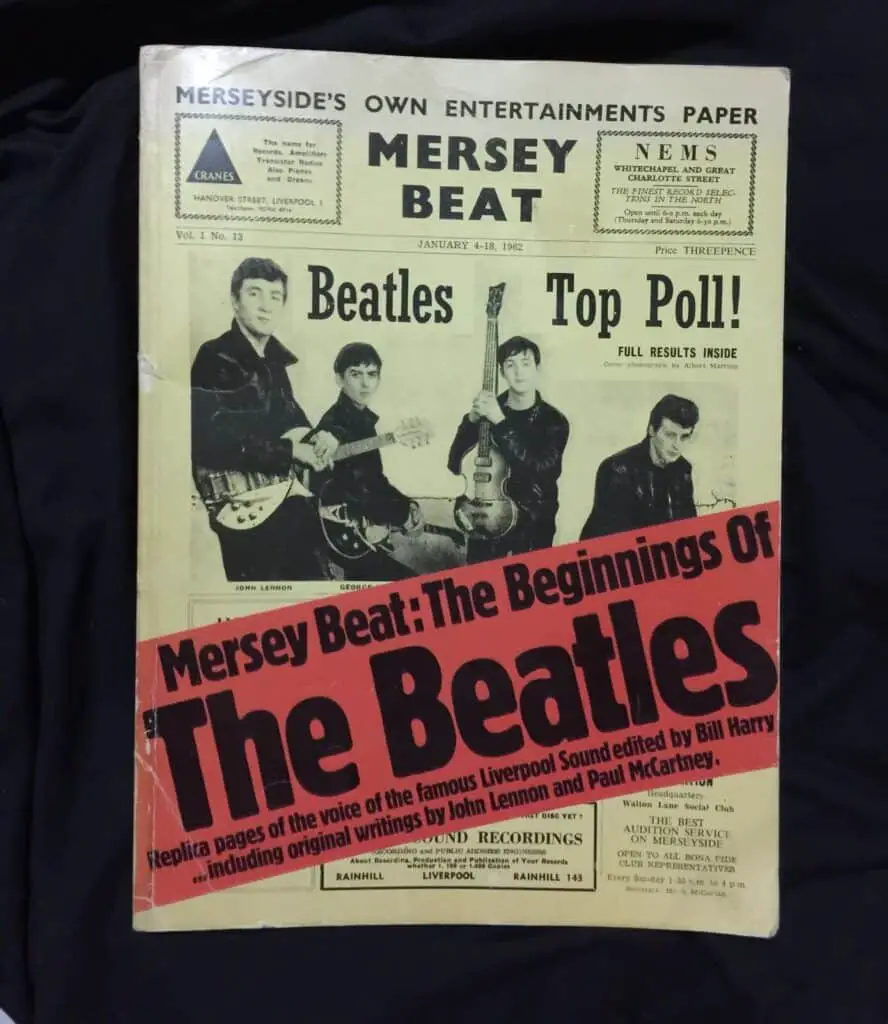[mwai_chatbot_v2 id="default"]
Whilst the final makeup of the Fab Four wasn’t complete until Ringo joined in 1962, many of the key elements of the band that were set to make them the global phenomenon they became, started to happen during 1961. It was a year in which they met the man that would manage them to their great success.
It was also a year of extensive touring, which would be a great grounding for the back breaking tours that the band would eventually do during the Beatlemania years.
Of course, for now, those concerts were mainly restricted to Liverpool and Hamburg, although 1961 does see the band make a first, rather unsuccessful trip to the south of England and even playing in London for the first time.
Visit places made famous by The Beatles
Mersey Beat was first coined during this period and even the famous haircut that was to be replicated by millions of lads and loved by even more girls, first appeared during this pivotal year in the history of the Beatles.
Welcome Home
After a successful period in Hamburg, where the band started to forge their identity and learn how to play concerts night after night (something that stood them in good stead for the height of Beatlemania touring), they returned home to play the famous ‘Welcome Home’ concert at Litherland Town Hall on 27th December 1960, which many regard as a true turning point for the band.
They started 1961 by playing a follow up to the ‘Welcome Home’ concert, back at Litherland Town Hall. The concert was significant because it was the first time Paul McCartney played the bass guitar for the band, as Stuart Sutcliffe had decided to stay in Hamburg with his finance Astrid Kirchherr.
Across the whole of 1961, the Beatles played a total of 20 shows at Litherland Town Hall, which is why some list the venue as equal in importance to the Cavern in the development of the Beatles, even though it does not get the same level of attention as the Liverpool city centre club. These performances in North Liverpool gave the band their first dedicated local following.
Find out what happened to The Beatles in 1963
As a result of the welcome home concert, the Beatles were met backstage by two different promoters who booked them for multiple concerts in the months ahead. The most significant of these was Brian Kelly, owner of Beekay Promotions, who ran multiple venues in Liverpool, including the Aintree Institute, where the Beatles played 31 times over two years.
Merseyside Domination
Whilst everyone remembers the famous gigs at Litherland Town Hall and the Cavern, which are talked about to this day, the band played all over Liverpool during 1961, performing almost 200 times at venues across Liverpool and the wider Merseyside area.
They would often do long runs at a venue or return to them on a regular basis. Here are some of the other venues they played the most sets at during 1961:
- Aintree Institute, Liverpool – They play the venue 30 times
- Casbah Coffee Club, Liverpool – 21 times. This venue was actually owned and booked by Pete Best’s mum
- Hambleton Hall, Liverpool – 15 times
- St John’s Hall, Liverpool – 11 times (another venue that was booked by Pete Best’s mum)
- Lathom Hall, Liverpool – 10 times
- Knotty Ash Village Hall, Liverpool – 7 times (also a venue booked by Pete Best’s mum)
- Cassanova Club, Liverpool – 7 times
- Tower Ballroom, New Brighton, Wallasey – 6 times
- Merseyside Civil Service Club, Liverpool – 5 times
- Blair Hall, Liverpool – 5 times
- Liverpool Jazz Society, Liverpool – 5 times

One other venue that the band only played once in 1961 was certainly different from many of the others they were used to, as it was onboard a ship. The band played onboard MV Royal Iris, a River Mersey ferry traditionally referred to as The Fish and Chip boat.
The owner of the Cavern Club, Ray McFall, put on events known as Riverboat Shuffles. The whole concert (the Beatles were second billing behind Acker Bilk the famous jazz clarinetist) ran for 3 hours and due to access to free beers, the band remember the gig fondly!
The Cavern Club
9th February 1961 marks a significant date in the history of the Beatles. Whilst in a previous incarnation as the Quarrymen some of the band had played the Cavern, this was the first time that the Beatles played the Cavern as a band. It was the first night for both Stuart Sutcliffe and George Harrison, who very nearly didn’t make it in for his Cavern debut!
Find out all about George Harrison here
George turned up wearing blue jeans and initially, the doorman refused to let him in, as it was against the policy of the club to wear them. The owner, Ray McFall, believed that if people wore good, clean clothes, they would be less likely to cause damage. He was eventually let in and the Beatles played the first of many gigs at the historic venue.
Situated on Matthew Street, The Cavern club would go on to become the venue most synonymous with the Fab Four, the place that cemented their status as the premier band in Liverpool and eventually across the UK.
In 1961 alone the band performed over 50 times at the Cavern and whilst figures are hard to tie down exactly, most accept the band played around 292 sets at the venue across their touring career!
The band were only paid £5 in total for this first gig, which was a lunchtime set. They went on to play over 100 lunchtime sets at the venue, but one imagines some of the later ones were fuller than this first one on 9th February 1961. The band remember that it was far from full and people were sitting around eating sandwiches.
It’s not a surprise it wasn’t full, as the gig wasn’t advertised (their first advertised gig at the Cavern was 21st February) and despite having a good local following, due to the buzz of their time in Hamburg, it took some time for the band to get a first gig at the Cavern, with Pete Best’s sister having to beg the owner to let them play.
After such an underwhelming start to 1961 at the Cavern, it certainly ended better. They had become a fixture at the club and by December of that year they ended up playing 16 different sets in the month, including performing 7 days out of 8 from 16th December to 23rd December.
Welcome to the South
On 9th December 1961, the Beatles had their first performance in the south of England and whilst they would go on to have incredible successful in the area, particularly in London, this first gig was far from a successful beginning! It would be fair to call it a disastrous start to life outside of Merseyside and Hamburg, their traditional fan base.
Of all the places to make their debut in Southern England, it was in Aldershot, Hampshire as the band appeared at the Palais Ballroom venue. The gig was organised by Sam Leach, who had organised several Beatles concerts in Liverpool and had determined that because A&R men were not willing to travel to Liverpool, he would take the band down south.

Unfortunately, Sam didn’t get his geography right and hadn’t booked the band in the greater London area as he should have. Even his attempts at promotion failed, as he tried to get an advert in the local paper, but they needed cash only, not the cheque he sent and with no contact details, they simply couldn’t let Sam know they were not running an ad.
What happened to the Beatles in 1964 rocked the world!
It was quickly evident that the gig wasn’t going to attract many people, so even the attempts of the band to go around the local coffee houses to offer free tickets did little to improve things. In the end, the estimate is that around 18 people attended the concert, which considering the band were used to packed venues back in Liverpool, was a major let down.
It did, unfortunately, lead to the band getting out of hand as the evening went on. Initially, it was good-natured as John and George left the band playing to do some dancing with the few guests at the venue, but as the evening went on and more brown ale was consumed, the band got louder and at one point were playing football with ping pong balls!
It was a pretty small place but was known as a venue that bands went to after gigs and the band enjoyed themselves after the Aldershot experience and put on an impromptu concert. Even the drive home to Liverpool that morning nearly ended in disaster, as the van ran out of petrol and Terry McCann managed to find his final five pounds to get the band home.
Predictably, playing a gig 30 miles from London and then an impromptu set at a small London nightclub did not attract any A;R men, which was the point of the exercise in the first place. All in all, the Beatles relationship with London would get a lot better in the years to come!
The Return to Hamburg
The Beatles time in Hamburg in 1960 was fundamental in the development of the band, but there longest spell in Hamburg and an incredibly influential period for them came in 1961. They returned to Hamburg at the end of March, ready for their first gig on 1st April at the Top Ten Club.
Their previous spell in Hamburg had ended badly for the band when George Harrison was deported for being underage (after the band got into a dispute with a promoter) and then Pete Best and Paul McCartney were arrested for arson and subsequently had to leave the country early.
Outside of Liverpool, Hamburg is the city most associated with the band and that bond was further developed by a staggering 92 night residency at the Top Ten Club. Some of the numbers from the residency really tell the magnitude of their stay in Hamburg
- The band played from 7 pm to 2 am on weekday evenings
- They played from 8 pm to 4 am on weekends
- For each set, they had a 15 minute break every hour
- Their contract was extended twice throughout the summer
- When they eventually performed their final show on 1st July 1961, they had been in Hamburg for 3 months and played on stage for a total of 503 hours!

The band were paid £3 each per day by the promoter Peter Eckhorn, the owner of the Top Ten Club.
Whilst in Hamburg, the band earned additional money by performing as the backing musicians for Tony Sheridan on some recordings he was doing, earning 300 marks for the sessions, which ran across three different days in June.
John played rhythm guitar, Paul was on bass, George on lead guitar and Pete Best on drums, whilst the band also did backing vocals on several of the tracks. They were also able to record a couple of tracks on their own across the three days.
One of the tracks they recorded went on to become a number five hit for Tony Sheridan in Germany. ‘My Bonnie’ was the track and it had the Beatles backing him and actually being listed as the ‘Beat Brothers’ to the German market. Ultimately it was this record that would become pivotal in creating a relationship that would change the future of the Beatles forever…
Introducing Brian Epstein
‘My Bonnie’ would eventually be released in the UK (as Tony Sheridan and the Beatles) in January of the following year. During the height of the Beatles, the song was re-released in the UK in 1963 and to a US audience for the first time in 1964, neither being hugely successful but it just highlighted the greed for anything Beatles related during that period.
The Beatles by year – how did the boys from Liverpool become a global phenomenon?
However, it was a request for the original German import of ‘My Bonnie’ in a record store in Liverpool that made the song so significant.
On 28th October 1961, Raymond Jones walked into North End Music Stores (NEMS) and asked for a German import called ‘My Bonnie’ by a band called the Beatles. The director of the store was behind the counter and asked what the song was, as he had never heard of it, the director’s name was Brian Epstein!
The record store grew out of a family furniture business, that starting selling musical instruments and records. Brian Epstein joined the family business in the 1950’s and was put in charge of the new Great Charlotte Street music store, which he grew into one of the biggest in the North West, before eventually taking charge of a new store in Whitechapel.
On this particular day, Brian made a record of the request from Raymond Jones, noting to look for it the following Monday. It wasn’t unusual for people to request records that the store didn’t stock, but something about the name of the band and the vigour with which Raymond Jones was asking for the record, stuck with Epstein.

It’s highly unlikely that Brian Epstein was unaware of the Beatles by this point, they were on posters around Liverpool and appeared regularly in the Mersey Beat magazine that was sold at NEMS, but it was the first time he started to take an active interest in who they were.
Intrigued by his meeting with the enthusiastic 18 year old Jones, Brian Epstein went to see the Beatles at the Cavern Club with his assistant, Alistair Taylor on 9th November 1961, setting in motion a chain of events that would eventually change the history of music forever.
Epstein arranged to see the band by calling the owner of the Mersey Beat magazine, Bill Harry, who arranged for him to enter the club without queuing and to be able to meet the band after their set was complete. So Epstein and Taylor sat at the back of the club to enjoy the performance.
As Epstein would go on to say later, he was immediately drawn to the band, loving the music, the beat and their sense of humour on stage. He knew right away that they had something different about them and were undoubtedly physically attractive.
He met the band afterwards, George Harrison recognising him straight away and they talked for a while. Epstein went back to watch the band multiple times at the Cavern Club and on 10th December 1961, he first suggested that he become the bands’ manager.
 The Beatles Collectibles and Memorabilia
The Beatles Collectibles and Memorabilia
Whilst he didn’t officially sign the band to a contract until the following month, he was immediately involved in band matters and booked their first official photoshoot on 17th December 1961.
Epstein contacted a photographer that had done his brothers wedding and asked him to do some photos of this band he was working with. Initially, Albert Marrion said no because they were really portraits and wedding photographers but eventually agreed.
Whilst Astrid Kirchherr and Jurgen Vollmer had taken photos of the band whilst in Hamburg, this was the first organised and paid for photo session for the band. 17 photos of the session still exist today, with one of them becoming famous after appearing on the cover of Mersey Beat and being used on a lot of promotional material during 1962.
Mersey Beat is Born
In years to come, the world would often refer to the Beatles and other bands from the area like Gerry and the Pacemakers, as Merseybeat. The name that went on to represent a whole musical genre actually came from a magazine of the same name, that was first written in July 1961.

Bill Harry, an art student and good friend of both Stuart Sutcliffe and John Lennon, was the man behind the magazine, although he credits his wife for its success due to her support and helping him raise the £50 they needed to get the project off the ground.
Bill had originally intended to produce a jazz music magazine, but he got so involved in the Beatles that he decided to make it a rock n’ roll magazine instead. He had noticed the massive amount of bands in the Merseyside region, from Liverpool to Southport and over the water, so decided to focus on his local area and it’s unique style of music.
The name itself came after he was looking at the range of areas that they would cover and thought it looked a lot like a policemen’s ‘beat’, hence the name Mersey Beat came into his head.
For the first edition Bill asked his friend John Lennon to write an autobiography about the Beatles, which he duly did and it was published, unedited, in that first edition. It sold better than Bill could have hoped, selling out its 5,000 copy run.
That Haircut
What started out as a birthday trip to Spain for John’s 21st, end with a new haircut in Paris that would change how people looked at the Beatles for years to come.
For his birthday, John had received £100 from one of his relatives, something that Paul was particularly impressed with, coming from a working class background as he did. It highlighted for him the difference to John’s very much middle class upbringing.
John decided he would take the money and travel to Spain for his birthday, taking Paul with him. They deciding on hitchhiking their way and as Paul was more experienced with this (having done some hitchhiking with George before) he proposed that they needed to stand out to get picked up and therefore they took bowler hats for the journey!
Via hitchhiking and a train, the pair ended up in Paris and despite the original plans, decided to stay in Paris rather than travel on to Spain. Having made it to Paris, they knew it would require doing some work to earn enough to get to Spain and eventually they decided to spend the whole week in Paris.
Whilst there, Paul and John met up with an old friend from Germany, Jurgen Vollmer, who now wore his hair brushed forward, in a style similar to one Astrid Kerchherr encouraged Stuart Sutcliffe to have.
The pair asked Jurgen to cut their hair, which he did at his place and a new phenomenon was born. As Paul says in Anthology about when they returned to Liverpool “it was all, Eh, your hair’s gone funny, no, this is the new style. Everyone thought we had started it, so it became ‘the Beatle hairdo’”
One funny side note from the Paris trip was Stuart Sutcliffe believing the Beatles were breaking up. Because Paul and John didn’t really talk about their plans, Stuart just heard they had gone to Paris to play and assumed the worst.
The Final Days of Stuart Sutcliffe
Stuart Sutcliffe had officially said he was leaving the band in December 1960 after the band returned to Liverpool and he stayed in Hamburg with his finance Astrid Kirchherr, before returning to Liverpool in late January 1961.
The band had always planned to return to Hamburg once George Harrison turned 18 in March and convinced Stuart to join them for the concerts. He returned to Hamburg before the rest of the band in Mid-March, with his fiancée Astrid Kirchherr.

Stuart stayed with the band for their long residency at the Top Ten Club, but at its conclusion made it clear he was leaving the band for good and would be attending art college in Hamburg and living with his fiancée Astrid. He had originally applied to do a diploma at Liverpool College of Art but was not accepted.
Stuart lent his bass guitar to Paul, which he would eventually keep as he progressed to being the lead bass player in the band.
John and Stuart were friends from their art college days in Liverpool before the Beatles and although he was not a natural musician, the band persuaded Stuart to buy a guitar and join the band. John stayed in close contact with Stuart throughout 1961, they exchanged letters regularly, right up until his sad early death in 1962 from a cerebral haemorrhage.
